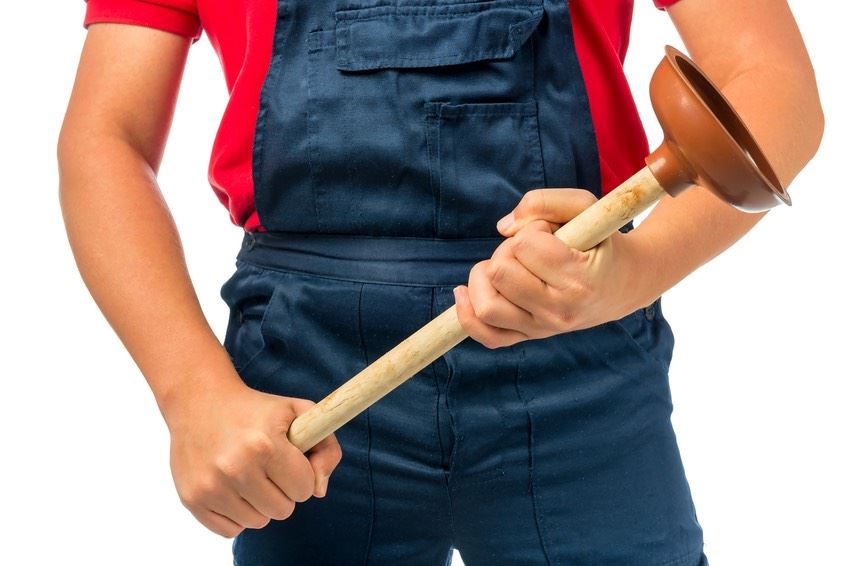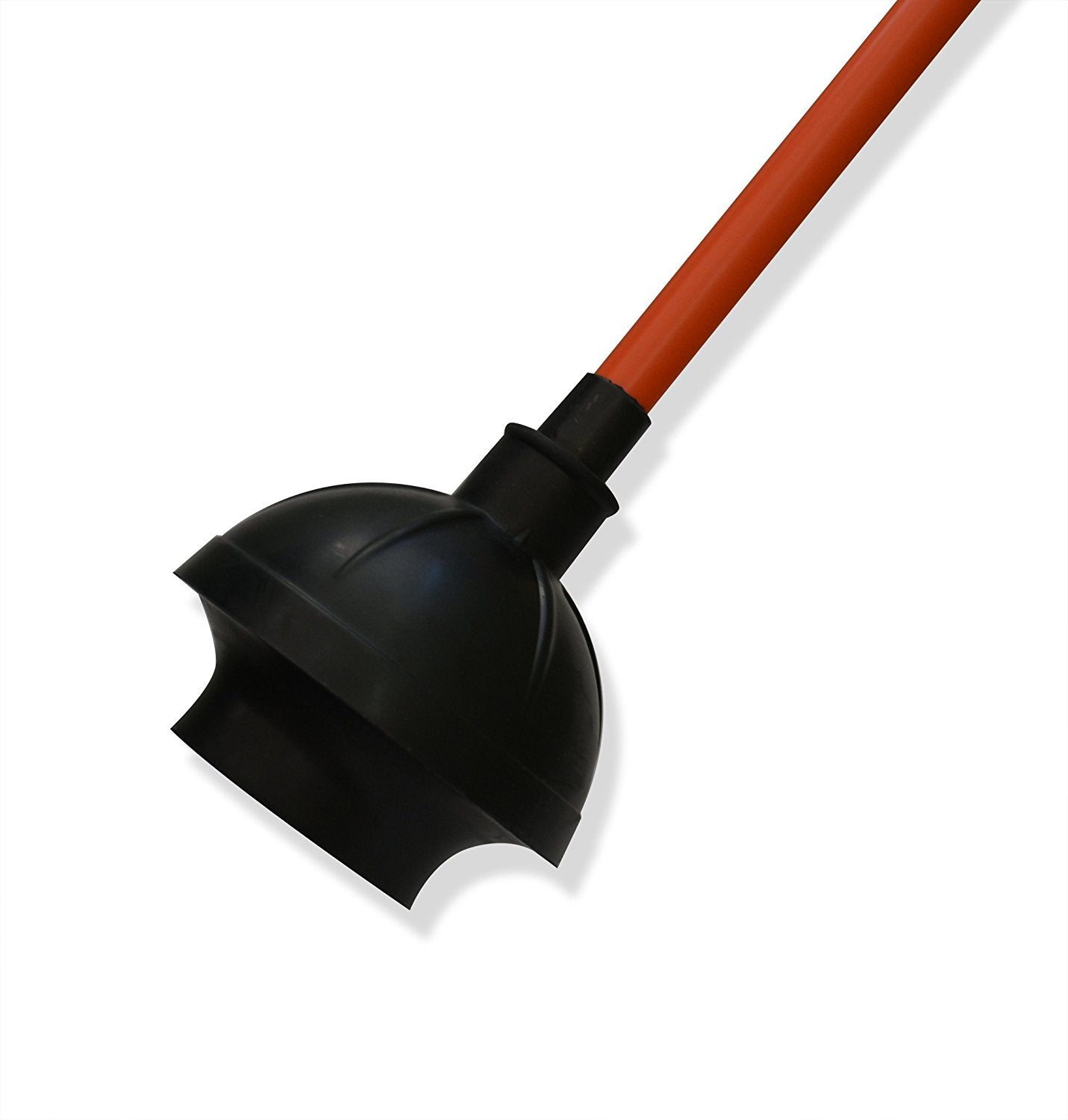Everyone will have their personal perception on the subject of How to Unclog Your Sink with a Plunger.

Intro
Correct maintenance of house drains pipes is necessary for avoiding blockages and making certain smooth water flow. Among the trick tools in every property owner's toolkit is the plunger, alongside different drain cleaners developed to take on persistent clogs efficiently. This article discovers exactly how to use plungers and drainpipe cleaners effectively to maintain your drains pipes flowing easily.
Area 1: Recognizing Plungers
Types of Plungers
There are a number of kinds of plungers readily available, each developed for different sorts of drains pipes and blocks. One of the most usual kinds include cup bettors, flange bettors, and accordion plungers.
Just How Plungers Work
Bettors work with the principle of creating stress and suction to dislodge clogs. When properly applied over a drainpipe, they create a vacuum that can take out particles or separate clogs.
Picking the Right Plunger
Selecting the ideal bettor relies on the kind of drainpipe and the nature of the blockage. Mug bettors are ideal for sinks and bathtubs, while flange plungers are much better suited for toilets as a result of their layout.
Common Mistakes with Bettors
Staying clear of these errors makes certain effective plunging: improper seal around the drainpipe, inadequate force, and unclear surrounding debris.
Section 2: Making Use Of Plungers Successfully
Prep work
Before plunging, make sure the bettor covers the drain entirely and forms a limited seal. Clear any visible debris around the drain opening.
Technique
Start with mild plunging movements to develop suction. Increase pressure progressively, making use of a consistent rhythm. Repeat as needed up until the drainpipe gets rid of.
Troubleshooting Tips
If diving doesn't work, attempt adjusting the seal, applying oil jelly for a better seal, or utilizing a different type of plunger.
Section 3: Understanding Drainpipe Cleaning Company
Types of Drainpipe Cleaning Company
Drain pipes cleansers can be chemical or enzymatic. Chemical cleansers use solid chemicals to liquify obstructions, while chemical cleansers utilize natural enzymes to break down raw material.
How Drainpipe Cleaners Job
Chemical cleaners respond with clogs to dissolve them, while chemical cleansers break down natural materials like hair and oil without harming pipelines.
Safety and security Factors to consider
Always use handwear covers and eye security when using chemical drain cleaners. Guarantee sufficient ventilation and adhere to supplier guidelines meticulously.
Eco-Friendly Alternatives
Take into consideration utilizing vinegar and baking soda or enzyme-based cleansers for eco-friendly choices that are more secure for pipelines and the environment.
Section 4: Utilizing Drain Cleaning Company Efficiently
Application Methods
Pour chemical cleaners directly into the drainpipe opening. Permit them to work for the suggested time prior to purging with hot water. Enzymatic cleansers need to rest overnight.
Precautions
Prevent mixing different kinds of cleansers, as this can create poisonous fumes. Never ever utilize chemical cleaners together with a bettor, as spilling can happen.
Dealing With Persistent Obstructions
For consistent blockages, take into consideration using a plumbing snake or calling an expert plumbing professional to stop damages to pipelines.
Verdict
Finally, comprehending exactly how to use plungers and drainpipe cleansers successfully is necessary for preserving healthy pipes systems. By selecting the right tools and strategies, property owners can tackle small clogs and protect against significant pipes problems down the line.
How To Properly Use A Plumbing Snake To Clear Drains
When any drain clogs in our home arise, we tend to gravitate toward the plunger and little else. In cases where the plunger and its vacuum-created pressure are not able to clear clogs, many immediately move to harmful chemicals or simply call their plumber to fix the issue.
we’re happy to help with all drain cleaning needs and concerns. This includes informing you on a few other home remedies you may have at your disposal for minor to moderate clogs, one of which is the use of a plumbing snake. Many people have never used one of these before – let’s go over the steps to take when your drain clogs and you have a plumbing snake available.
Attempt Plunger Use
The first step here, as we noted above, should indeed be to grab your plunger when you notice a drain clog and attempt to resolve it this way. If you’re unsure how to use a particular type of plunger, our plumbers can answer any questions you have. If this doesn’t do the trick, however, you move on to the snake.
Locate And Prepare Snake
A plumbing snake is a metal or plastic device that’s generally about a quarter of an inch thick. It’s design with significant extensions, meant to reach down into your clogged drain and push the clog out. Snakes also contain drain augers that will latch onto and push stubborn blockages.
If your plunger doesn’t clear a clog, locate your snake and bring it to the drain in question. We also recommend keeping a bucket nearby to collect the clog once you pull it out, plus we’d advise wearing goggles and possibly protective gloves.
Feed Snake
Once you’re ready to go, feed the snake slowly down the drain, using the crank device it comes with to keep it moving until it finds the clog. Once this happens, much of the clog will be latched onto the coil so you can pull it out, while the rest will simply break up and flow downward.
Detach Debris
Remove the snake slowly from the drain, and once you’ve done so, pick off any debris that’s stuck to the coil. This is another area where wearing gloves is a must.
Flush Drain
Finally, take a few minutes to ensure the snake has done its job correctly. If you’ve been using it on a toilet, flush the toilet a couple times and make sure everything flows well. If you’ve used it on a different drain, flush it with some room temperature water.
https://www.mybuddytheplumber.com/blog/how-to-properly-use-a-plumbing-snake-to-clear-drains/

Application Methods
Pour chemical cleaners directly into the drainpipe opening. Permit them to work for the suggested time prior to purging with hot water. Enzymatic cleansers need to rest overnight.
Precautions
Prevent mixing different kinds of cleansers, as this can create poisonous fumes. Never ever utilize chemical cleaners together with a bettor, as spilling can happen.
Dealing With Persistent Obstructions
For consistent blockages, take into consideration using a plumbing snake or calling an expert plumbing professional to stop damages to pipelines.
Verdict
Finally, comprehending exactly how to use plungers and drainpipe cleansers successfully is necessary for preserving healthy pipes systems. By selecting the right tools and strategies, property owners can tackle small clogs and protect against significant pipes problems down the line.
How To Properly Use A Plumbing Snake To Clear Drains
When any drain clogs in our home arise, we tend to gravitate toward the plunger and little else. In cases where the plunger and its vacuum-created pressure are not able to clear clogs, many immediately move to harmful chemicals or simply call their plumber to fix the issue.
we’re happy to help with all drain cleaning needs and concerns. This includes informing you on a few other home remedies you may have at your disposal for minor to moderate clogs, one of which is the use of a plumbing snake. Many people have never used one of these before – let’s go over the steps to take when your drain clogs and you have a plumbing snake available.
Attempt Plunger Use
The first step here, as we noted above, should indeed be to grab your plunger when you notice a drain clog and attempt to resolve it this way. If you’re unsure how to use a particular type of plunger, our plumbers can answer any questions you have. If this doesn’t do the trick, however, you move on to the snake.
Locate And Prepare Snake
A plumbing snake is a metal or plastic device that’s generally about a quarter of an inch thick. It’s design with significant extensions, meant to reach down into your clogged drain and push the clog out. Snakes also contain drain augers that will latch onto and push stubborn blockages.
If your plunger doesn’t clear a clog, locate your snake and bring it to the drain in question. We also recommend keeping a bucket nearby to collect the clog once you pull it out, plus we’d advise wearing goggles and possibly protective gloves.
Feed Snake
Once you’re ready to go, feed the snake slowly down the drain, using the crank device it comes with to keep it moving until it finds the clog. Once this happens, much of the clog will be latched onto the coil so you can pull it out, while the rest will simply break up and flow downward.
Detach Debris
Remove the snake slowly from the drain, and once you’ve done so, pick off any debris that’s stuck to the coil. This is another area where wearing gloves is a must.
Flush Drain
Finally, take a few minutes to ensure the snake has done its job correctly. If you’ve been using it on a toilet, flush the toilet a couple times and make sure everything flows well. If you’ve used it on a different drain, flush it with some room temperature water.
https://www.mybuddytheplumber.com/blog/how-to-properly-use-a-plumbing-snake-to-clear-drains/

I hope you enjoyed our article about A Guide to Plungers (and How to Use Them). Thank you so much for taking a few minutes to read through our post. Make sure you take a moment to promote this page if you liked it. Thanks for taking the time to read it.
Schedule Service